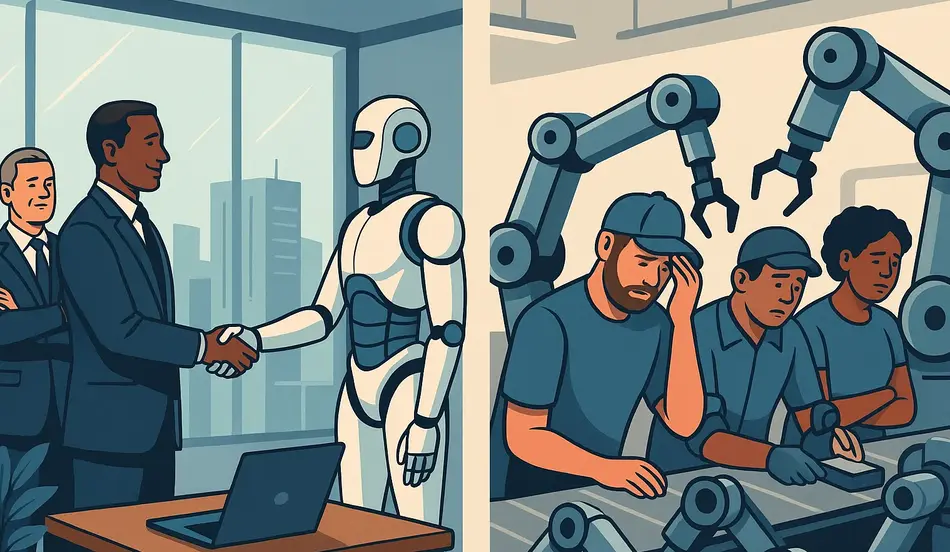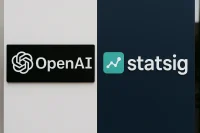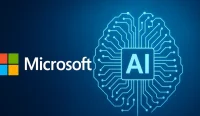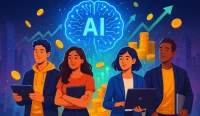The Unprecedented Scale of AI Job Displacement Threatens 40% Unemployment in Key Sectors
The world stands at a critical crossroads as artificial intelligence rapidly transforms the job market at an unprecedented pace. Industry experts warn that AI job displacement could lead to 20-40% unemployment in entire sectors within just two to three years. Unlike previous technological revolutions that evolved over decades, this AI-driven disruption is happening in months, with jobs vanishing virtually overnight.
Former Google executive Moada has expressed serious concerns about our collective future, stating, “If the people that helped build the AI are scared, maybe we should be paying attention.” This sentiment echoes throughout Silicon Valley as AI systems increasingly demonstrate capabilities that match or exceed human performance across multiple industries.
Critical Sectors Facing Immediate AI Job Displacement Risk
The data reveals a troubling pattern of vulnerability across major employment sectors:
- 11% of the workforce in office and administrative jobs – AI can already perform most of these functions
- 6% in business and finance – specifically targeted by upcoming GPT-5 capabilities
- 7% in management roles – where AI systems often outperform human decision-making
- 9% in sales positions – where AI agents already close deals 24/7
These figures represent approximately 33% of all jobs with high automation probability within the next three to five years. The economic implications are staggering, especially considering the rapid deployment timeline.
Table of Contents
The Unprecedented Speed of AI Job Displacement
Unlike previous technological revolutions that allowed for gradual workforce adaptation, AI job displacement is occurring at breakneck speed. Industry experts consistently emphasize that “this technological change looks different—it’s faster, harder to adapt to, and broader” than anything we’ve experienced before.
The disruption isn’t limited to a single industry evolving over a decade—it’s simultaneously affecting:
- Video editors replaced by AI creating Hollywood-quality content for $17
- Graphic designers automated by systems working faster than humanly possible
- Truck drivers supplanted by self-driving vehicles already operating on Texas highways
- Even programmers—the very people building AI—being outperformed by AI coding systems
The Economic Reality Driving Rapid Adoption
The business case for AI adoption creates powerful economic incentives that virtually guarantee widespread implementation. Companies can achieve a staggering 99% cost reduction on many positions by implementing AI solutions.
When executives can replace a $50,000 salary with $500 worth of AI computing resources, the decision becomes obvious from a profit perspective. This isn’t a moral failing of capitalism—it’s simply how the system functions when optimizing for shareholder value.
This economic reality means job losses won’t follow gradual transition patterns. When companies switch to AI solutions, they’ll likely do so rapidly and at scale, potentially creating sudden employment shocks across multiple sectors simultaneously.
Global Disparities in AI Job Displacement Response
The impact of AI job displacement varies significantly by region, creating potential geopolitical and economic imbalances:
- United States: Potentially experiencing an entrepreneurship explosion (36% of Gen Z already identify as entrepreneurs)
- Europe: Facing challenges due to rigid labor laws and less entrepreneurial culture
- Middle East: Positioning as the global AI infrastructure hub through trillion-dollar investments
- China: Developing an independent AI ecosystem after US chip restrictions
These regional differences may exacerbate existing inequalities and create new economic power centers based on AI adaptation speed.
The Entrepreneurial Opportunity Within AI Job Displacement
Despite the concerning outlook for traditional employment, a significant opportunity emerges for those willing to embrace entrepreneurship. As Dr. McCoy (Julia McCoy’s AI clone) explains, “The only job that survives long-term is entrepreneur—not because other work disappears, but because the tools to create value are being democratized.”
With AI tools, individual entrepreneurs can now accomplish what previously required large teams:
- Creating Hollywood-quality films independently
- Building software serving millions of users
- Managing global supply chains from a laptop
However, this window of opportunity has a limited timeframe. Silicon Valley has coined the term “singularity sprint”—the anxious all-out rush to launch bold projects now, driven by fear that rapidly advancing AI will soon make human leverage obsolete.
Hiring? Post Jobs for Free with WhatJobs
Connect with qualified candidates during this AI-driven transformation of the workforce. WhatJobs helps you reach talent fast—at no cost—so you can hire smarter, faster, and more strategically.
Post a Job for FreeDesigning Our Collective Future Amid AI Job Displacement
The fundamental question isn’t whether AI will transform work—that’s already happening. The real question is whether we’ll design systems that benefit humanity broadly or exacerbate existing inequalities.
Several potential paths forward include:
- Universal basic income funded by AI productivity gains
- Shortened work weeks as AI handles routine tasks
- Wealth redistribution mechanisms as AI companies become extraordinarily valuable
- New forms of human work we haven’t yet imagined
These outcomes aren’t inevitable—they require intentional policy choices and social frameworks that must be developed rapidly as AI capabilities accelerate.
Preparing for the AI-Driven Economy
For individuals navigating this shifting landscape, several strategies can help maintain relevance:
- For employed workers: Focus on building skills in AI collaboration and creative problem-solving. The humans who thrive will be those who augment AI rather than compete with it.
- For entrepreneurs: Recognize this moment of unprecedented opportunity. The tools for creating value have never been more powerful or accessible.
- For policymakers: Begin experimenting with UBI, new work models, and wealth distribution mechanisms immediately.
The Two-Year Window for Action on AI Job Displacement
The experts are clear: we have approximately two to three years to adapt our economic and social systems to this new reality. This isn’t science fiction or distant futurism—it’s happening now, faster than even the most informed experts predicted.
“We’re on the edge of either the most abundant period in human history or the most disruptive,” notes Dr. McCoy. “Which future we get depends on the choices we make in the next two to three years.”
In this exponential age, the future belongs to those who adapt first. The AI revolution won’t wait for slow movers—it’s accelerating daily, transforming industries and rewriting the rules of economic participation. For more insights on how AI is transforming various industries, check out McKinsey’s research on generative AI’s economic potential.
To stay ahead of these changes, consider exploring AI-resistant career paths that emphasize uniquely human skills like creativity, empathy, and strategic thinking.
FAQ: Understanding AI Job Displacement
How quickly could AI job displacement affect employment rates?
Industry experts warn that AI job displacement could cause 20-40% unemployment in certain sectors within just 2-3 years. Unlike previous technological revolutions that evolved over decades, AI disruption is happening in months, with jobs potentially vanishing overnight as companies implement 99% cost reductions through automation.
Which job sectors are most vulnerable to AI job displacement?
The sectors facing highest AI job displacement risk include office and administrative roles (11% of workforce), business and finance positions (6%), management roles (7%), and sales jobs (9%). Together, these represent approximately 33% of all jobs with high automation probability within 3-5 years.
Can workers adapt to prevent AI job displacement in their careers?
Workers can mitigate AI job displacement risk by developing skills in AI collaboration and creative problem-solving rather than competing directly with AI capabilities. The most successful humans in the AI economy will be those who learn to augment and direct AI tools rather than performing tasks AI can do more efficiently.
What economic systems might address widespread AI job displacement?
Several potential responses to AI job displacement are being considered, including universal basic income funded by AI productivity gains, shortened work weeks, wealth redistribution mechanisms as AI companies become extraordinarily valuable, and the development of entirely new forms of human work that complement AI capabilities.
How is AI job displacement different from previous technological revolutions?
AI job displacement differs from previous technological revolutions in three critical ways: speed (months vs. decades), breadth (affecting multiple industries simultaneously), and depth (replacing cognitive as well as physical labor). These factors make adaptation significantly more challenging than during previous periods of technological change.




